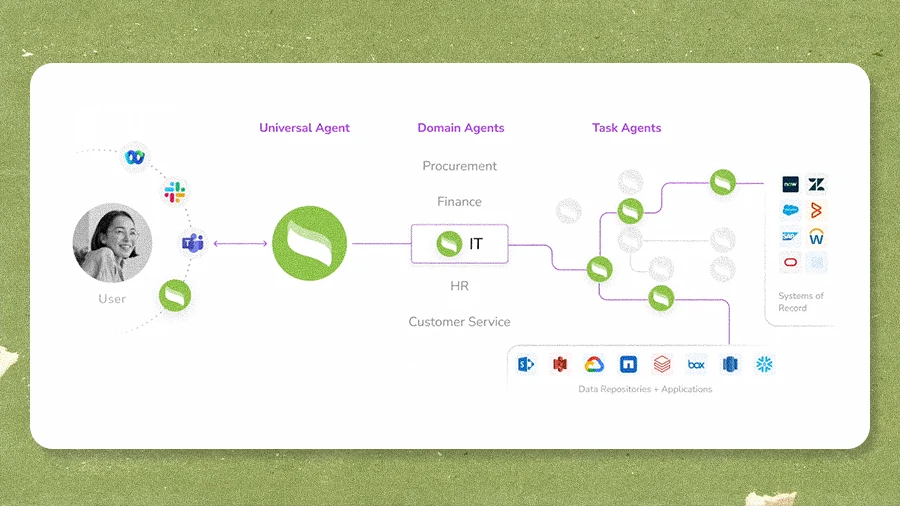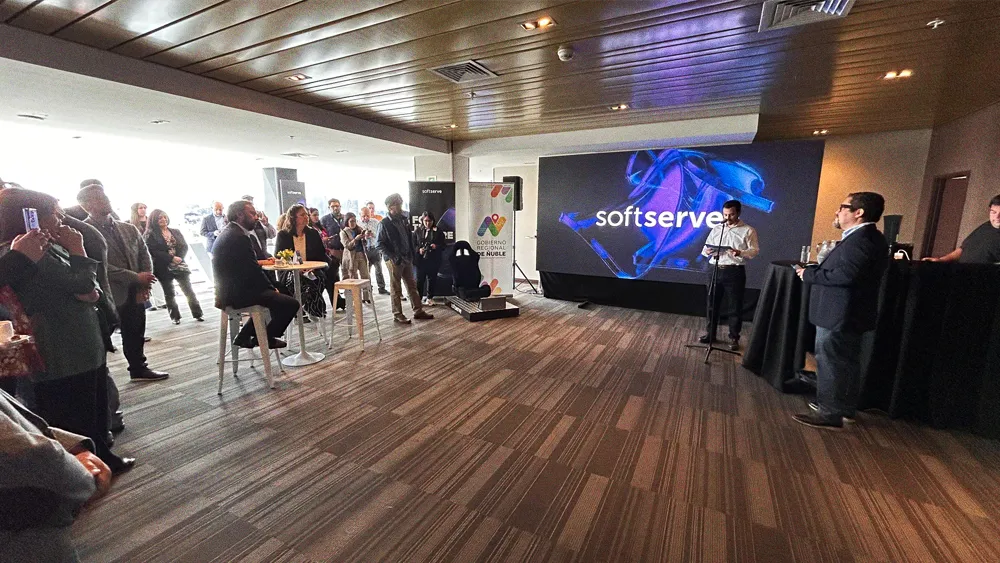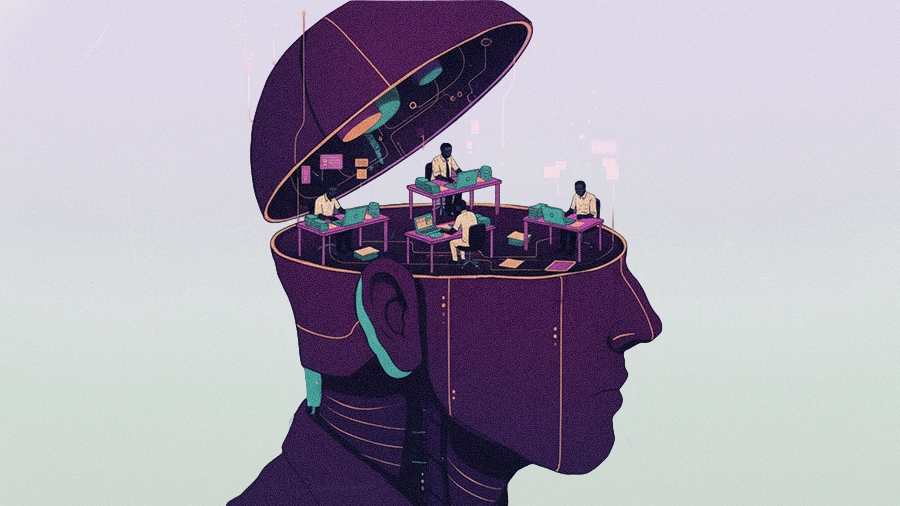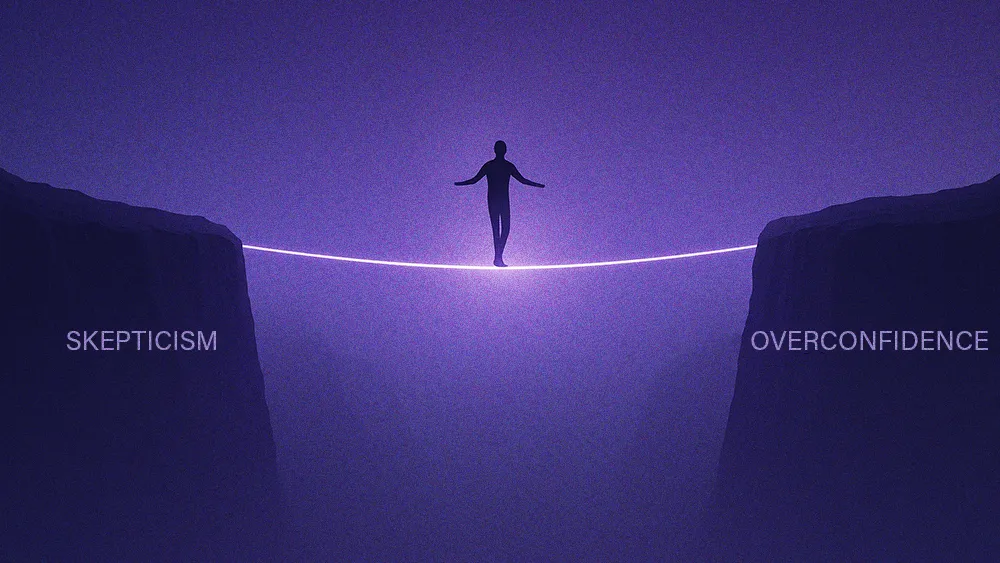Aisera’s Internal AI Rollout Reveals Why Even Tech Experts Need a Human-Centric ‘Why’

Key Points
Successful AI adoption within enterprises hinges on clarity of purpose and human buy-in, not just technical capability.
Gaurav Kamra, Director of People at Aisera, addresses this challenge by championing empathy and tailored communication to overcome employee resistance.
He implements a pyramid framework, ensuring leaders understand the strategic “why,” managers grasp execution logic, and individual contributors see practical usefulness.
Kamra demonstrates that even AI experts need the strategic business context, proving human-centric leadership is key to successful AI transformation.
The biggest obstacle to AI adoption is a mental blockage in leaders and employees. People are used to their established ways of working, leading them to think that sending a simple email is easier than spending five minutes on a new workflow.

Gaurav Kamra
Director of People
Aisera
The success of rolling out any new AI tool hinges less on its technical power and more on the clarity of its purpose in the enterprise. For many leaders, the friction to adoption isn’t capability, but team buy-in. Without it, even the most capable tools will stall. This exact challenge is now being put to the test inside Aisera, an agentic AI company, as it turns its automation philosophy on its own team of experts.
Leading the charge is Gaurav Kamra, Aisera’s Director of People. He brings a wealth of experience from HR leadership roles at Microsoft and the global consulting firm Ernst & Young. Kamra illustrates AI’s value through a simple administrative task: generating an employment verification letter. A process that once took two to three days of back-and-forth emails now becomes a five-minute, self-service workflow. But getting to that five-minute workflow isn’t a technology problem. It’s a human one.
“The biggest obstacle is a mental blockage in leaders and employees. People are used to their established ways of working, leading them to think that sending a simple email is easier than spending five minutes on a new workflow,” he says, explaining that employee resistance often stems from past experiences that can manifest as a fear of losing the personal touch in HR.
In another’s shoes: Kamra suggests leading with empathy and transparency is the answer to employee resistance. Clarifying how a new process helps others transforms efficiency into a shared value. This builds the trust necessary for widespread adoption. Kamra explains, “Employees need coaching to put themselves in the administrator’s shoes.” An email might not seem like an effort for one person. However, it creates work for another, reducing their efficiency. “We encourage employees to consider the time saved for others. It allows them to focus on more useful and productive work,” he adds.
To deliver this message at scale, Kamra uses a pyramid framework to tailor communication to each level of the organization, starting with the most senior leaders. “Securing buy-in fundamentally requires a direct conversation about the strategy and the overarching ‘why,'” he says. Leaders must grasp the full business case. Once they understand and commit, leaders become instrumental in cascading the message throughout their organizations.
Middle managers are tasked with translating the executive vision into actionable steps, demonstrating how the new processes will logically fit into existing operations and contribute to the overarching strategy. Therefore, their understanding of the ‘why’ is rooted in the practicalities of implementation. “For the middle-management layer, communication shifts to reinforcing the strategy top leadership already established and approved,” Kamra explains.
“At the individual contributor level, the focus is squarely on practical training, coaching, and guiding them through the new process,” he concludes. Driving adoption at this level involves practical demonstrations, workshops, and ongoing engagement sessions, highlighting tangible benefits and ease of use in daily tasks.
Automate tasks, not talk: A primary goal of automation is to elevate human interaction, Kamra outlines. Many new technologies function as one-way communication for gathering data. Automating these tasks frees HR leaders to engage their teams in high-value two-way communication like coaching and mentorship. Agentic AI becomes the cornerstone of a future-ready HR strategy, augmenting, rather than replacing, human capability. Kamra asserts, “Direct conversation represents true two-way communication, where HR professionals can both gather and provide information. There is always immense merit in that human exchange.” This exchange is precisely where HR can use its time most effectively: guiding, mentoring, and coaching individuals to help them improve as professionals.
The why in AI: Which brings the story back to the “Aisera for Aisera” project. Rolling out AI to a team of AI experts might seem easy, but the project revealed a fascinating insight: even the builders needed the “why.” True adoption hinged on connecting technical skill with a clear grasp of business purpose. Kamra observes, “Our technical experts already understand the technology and how to automate a workflow. They are masters of the ‘what’ and the ‘how.'” However, they often lack the business context for why a process exists. “That strategic ‘why’ is the gap we must fill,” he states.
The fact that even the engineers of the technology still need to understand the “why” proves human-centric leadership is the key to any successful AI transformation. Kamra explains, “The ‘why’ is intrinsically tied to our organizational philosophy. It involves articulating our core principles, whether that’s our compensation philosophy or our performance management approach. It’s about answering why we are implementing a process in a particular way—because it directly aligns with our overarching organizational flow and strategic objectives.”
Related articles
TL;DR
Successful AI adoption within enterprises hinges on clarity of purpose and human buy-in, not just technical capability.
Gaurav Kamra, Director of People at Aisera, addresses this challenge by championing empathy and tailored communication to overcome employee resistance.
He implements a pyramid framework, ensuring leaders understand the strategic “why,” managers grasp execution logic, and individual contributors see practical usefulness.
Kamra demonstrates that even AI experts need the strategic business context, proving human-centric leadership is key to successful AI transformation.

Gaurav Kamra
Aisera
Director of People

Director of People
The success of rolling out any new AI tool hinges less on its technical power and more on the clarity of its purpose in the enterprise. For many leaders, the friction to adoption isn’t capability, but team buy-in. Without it, even the most capable tools will stall. This exact challenge is now being put to the test inside Aisera, an agentic AI company, as it turns its automation philosophy on its own team of experts.
Leading the charge is Gaurav Kamra, Aisera’s Director of People. He brings a wealth of experience from HR leadership roles at Microsoft and the global consulting firm Ernst & Young. Kamra illustrates AI’s value through a simple administrative task: generating an employment verification letter. A process that once took two to three days of back-and-forth emails now becomes a five-minute, self-service workflow. But getting to that five-minute workflow isn’t a technology problem. It’s a human one.
“The biggest obstacle is a mental blockage in leaders and employees. People are used to their established ways of working, leading them to think that sending a simple email is easier than spending five minutes on a new workflow,” he says, explaining that employee resistance often stems from past experiences that can manifest as a fear of losing the personal touch in HR.
In another’s shoes: Kamra suggests leading with empathy and transparency is the answer to employee resistance. Clarifying how a new process helps others transforms efficiency into a shared value. This builds the trust necessary for widespread adoption. Kamra explains, “Employees need coaching to put themselves in the administrator’s shoes.” An email might not seem like an effort for one person. However, it creates work for another, reducing their efficiency. “We encourage employees to consider the time saved for others. It allows them to focus on more useful and productive work,” he adds.
To deliver this message at scale, Kamra uses a pyramid framework to tailor communication to each level of the organization, starting with the most senior leaders. “Securing buy-in fundamentally requires a direct conversation about the strategy and the overarching ‘why,'” he says. Leaders must grasp the full business case. Once they understand and commit, leaders become instrumental in cascading the message throughout their organizations.
Middle managers are tasked with translating the executive vision into actionable steps, demonstrating how the new processes will logically fit into existing operations and contribute to the overarching strategy. Therefore, their understanding of the ‘why’ is rooted in the practicalities of implementation. “For the middle-management layer, communication shifts to reinforcing the strategy top leadership already established and approved,” Kamra explains.
“At the individual contributor level, the focus is squarely on practical training, coaching, and guiding them through the new process,” he concludes. Driving adoption at this level involves practical demonstrations, workshops, and ongoing engagement sessions, highlighting tangible benefits and ease of use in daily tasks.
Automate tasks, not talk: A primary goal of automation is to elevate human interaction, Kamra outlines. Many new technologies function as one-way communication for gathering data. Automating these tasks frees HR leaders to engage their teams in high-value two-way communication like coaching and mentorship. Agentic AI becomes the cornerstone of a future-ready HR strategy, augmenting, rather than replacing, human capability. Kamra asserts, “Direct conversation represents true two-way communication, where HR professionals can both gather and provide information. There is always immense merit in that human exchange.” This exchange is precisely where HR can use its time most effectively: guiding, mentoring, and coaching individuals to help them improve as professionals.
The why in AI: Which brings the story back to the “Aisera for Aisera” project. Rolling out AI to a team of AI experts might seem easy, but the project revealed a fascinating insight: even the builders needed the “why.” True adoption hinged on connecting technical skill with a clear grasp of business purpose. Kamra observes, “Our technical experts already understand the technology and how to automate a workflow. They are masters of the ‘what’ and the ‘how.'” However, they often lack the business context for why a process exists. “That strategic ‘why’ is the gap we must fill,” he states.
The fact that even the engineers of the technology still need to understand the “why” proves human-centric leadership is the key to any successful AI transformation. Kamra explains, “The ‘why’ is intrinsically tied to our organizational philosophy. It involves articulating our core principles, whether that’s our compensation philosophy or our performance management approach. It’s about answering why we are implementing a process in a particular way—because it directly aligns with our overarching organizational flow and strategic objectives.”




